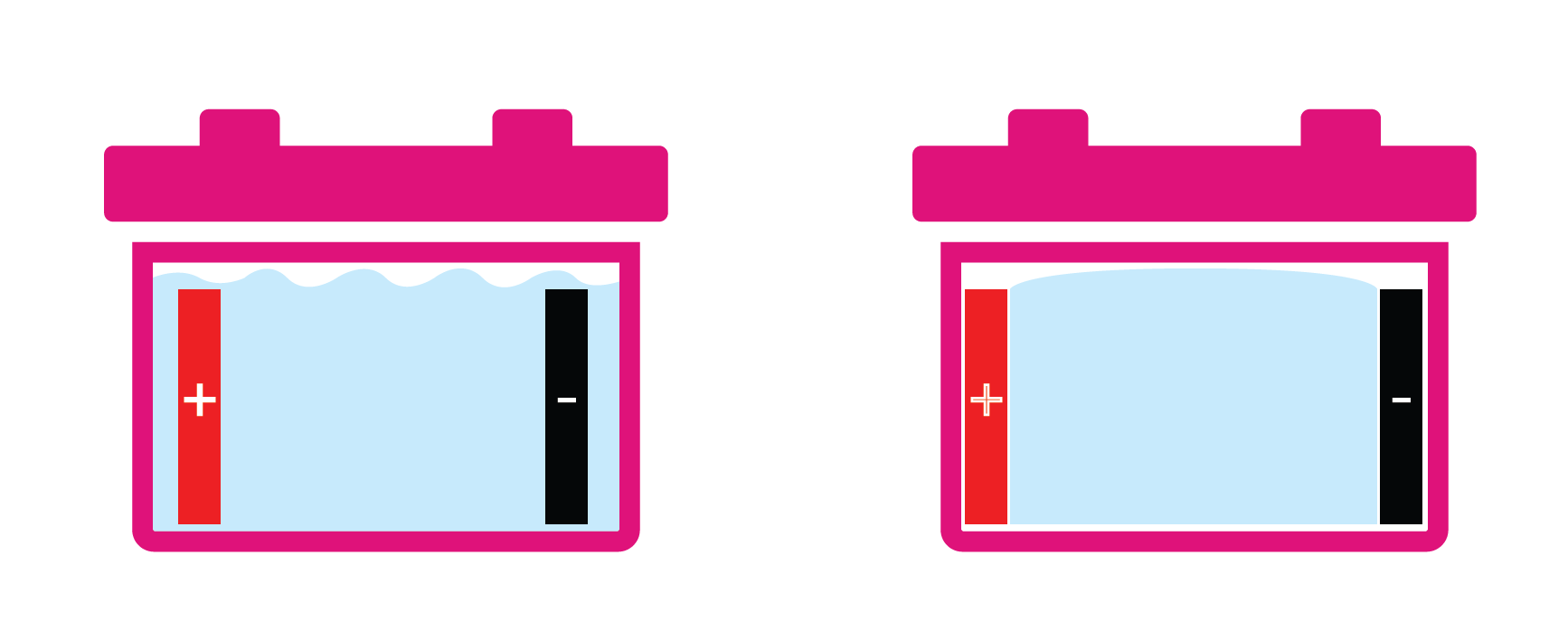-
What is a Deep Cycle Battery?
Deep Cycle Batteries are energy storage units in which a chemical reaction occurs that develops voltage and results in electricity. Deep Cycle Batteries are designed to be discharged and recharged many times. They are designed to deliver power at a steady rate over a long period of time, rather than short bursts of energy. Deep Cycle Batteries are usually rated in Amp Hours (An Amp Hour reflects the time it takes to discharge a battery before it needs recharging. You can find this number by multiplying Amps by Hours.)
-
What can I use a Deep Cycle Battery for?
You can use a Deep Cycle Battery for many applications. There are different classifications of Deep Cycle batteries which will be explained later but depending on your battery choice, it can be used for any of the following applications.
• Marine – Sail Boat, Smaller Vessels & Recreational Fishing Boats, fishfinders, radios,
• Camping – To power your fridges, radios, lights, accessories.
• Industrial electrically propelled Fork Lifts
• Off Grid Storage such as Solar
• Uninterruptible Power Supply (UPS) – Computers & Associated Equipment
• ATV, Motorcycles etc in certain applications. -
Can you interchange Starting and Deep Cycle Batteries?
A starting battery is designed to start internal combustion engines such as cars and trucks which require a short burst of larger current, quickly. There are a greater number of lead plates in a starter battery. These plates are thinner and are often made of a lead ‘sponge’. This sort of arrangement means that the plates have much more surface area in the electrolyte solution than a Deep Cycle battery and allow them to draw larger currents much quicker than a Deep Cycle battery. If a starting battery is routinely ‘Deep Cycled’, it will generally fail after 30-100 cycles.
A deep cycle battery can provide a surge when needed, but nothing like the surge a car battery can, due to the thicker lead plates. A deep cycle battery is also designed to be deeply discharged over and over again (something that would ruin a car battery very quickly).
A car battery typically has two ratings:
- CCA (Cold Cranking Amps) – The number of amps that the battery can produce at 0 degrees C for 30 seconds
- RC (Reserve Capacity) – The number of minutes that the battery can deliver 25 amps while keeping its voltage above 10.5 volts
Typically, a deep cycle battery will have two or three times the RC of a car battery but will deliver one-half or three-quarters the CCAs. In addition, a deep cycle battery can withstand several hundred total discharge/recharge cycles, while a car battery is not designed to be totally discharged.
The answer is yes, you can but not using the batteries for their intended use will significantly shorten the lifespan of your battery.
-
Are there different types of Deep Cycle Batteries?
Yes! There are different types of Deep Cycle Batteries. Typically Deep Cycle Batteries are categorized as either Flooded (FLA) or Valve Regulated Lead Acid (VRLA).
VRLA Batteries can then be broken down further into Absorbed Glass Mat (AGM) & Gel Batteries. All with their own Unique characteristics and capabilities.(Left) FLA Battery. Positive & Negative plates are fully submerged in the Electrolyte Solution. (Right) VRLA Battery. Electrolyte Liquid is contained in Absorptive Glass Matt or a Gelled Electrolyte is used. Some disadvantages and advantages are:
• FLA Batteries are usually a lower cost
• FLA Batteries have a longer Deep Cycle Life than VRLA Batteries
• FLA Batteries perform better than VRLA in warmer climates
• VRLA Batteries can be mounted in many different positions, including on an angle. However, FLA Batteries cannot as the electrolyte fluid will spill.
• FLA Batteries produce gas and are required to be used in a well-ventilated area. VRLA Batteries low amounts of gas and acid output making them much safer for indoor use.Above are just some of the differences between the different battery types. To read more about the differences between FLA & VRLA Batteries, see our blog post on different types of Deep Cycle Batteries Here.
-
How to select the best Deep Cycle Battery Type for application
The Size and type of battery that you select will be dependent on the application and operating conditions. Below are some things that you will need to take into account when selecting the right battery for the job.
- Amp Hours. You must ensure that there are sufficient Amp Hours to power the equipment that you need to use. (To work out how many Amp Hours you require, please read our blog post Here).
- Cycle Rating. You’ll need to take this into account. The Cycle Rating is how many times it can be recharged and discharged.
- Indoor/Outdoor Application. if your battery is to be used in an enclosed space, then a VRLA battery may be the better option as it does not produce gas.
- Environment. Will your battery be used in an offroad environment or be exposed to a large amount of vibration? if so then A VRLA Battery would be the better choice. VRLA batteries. AGM & Gel Batteries are “unspillable”. With a high vibration or the angles in which your vehicle can end up on whilst off-roading, it is likely that an FLA Battery would spill.




